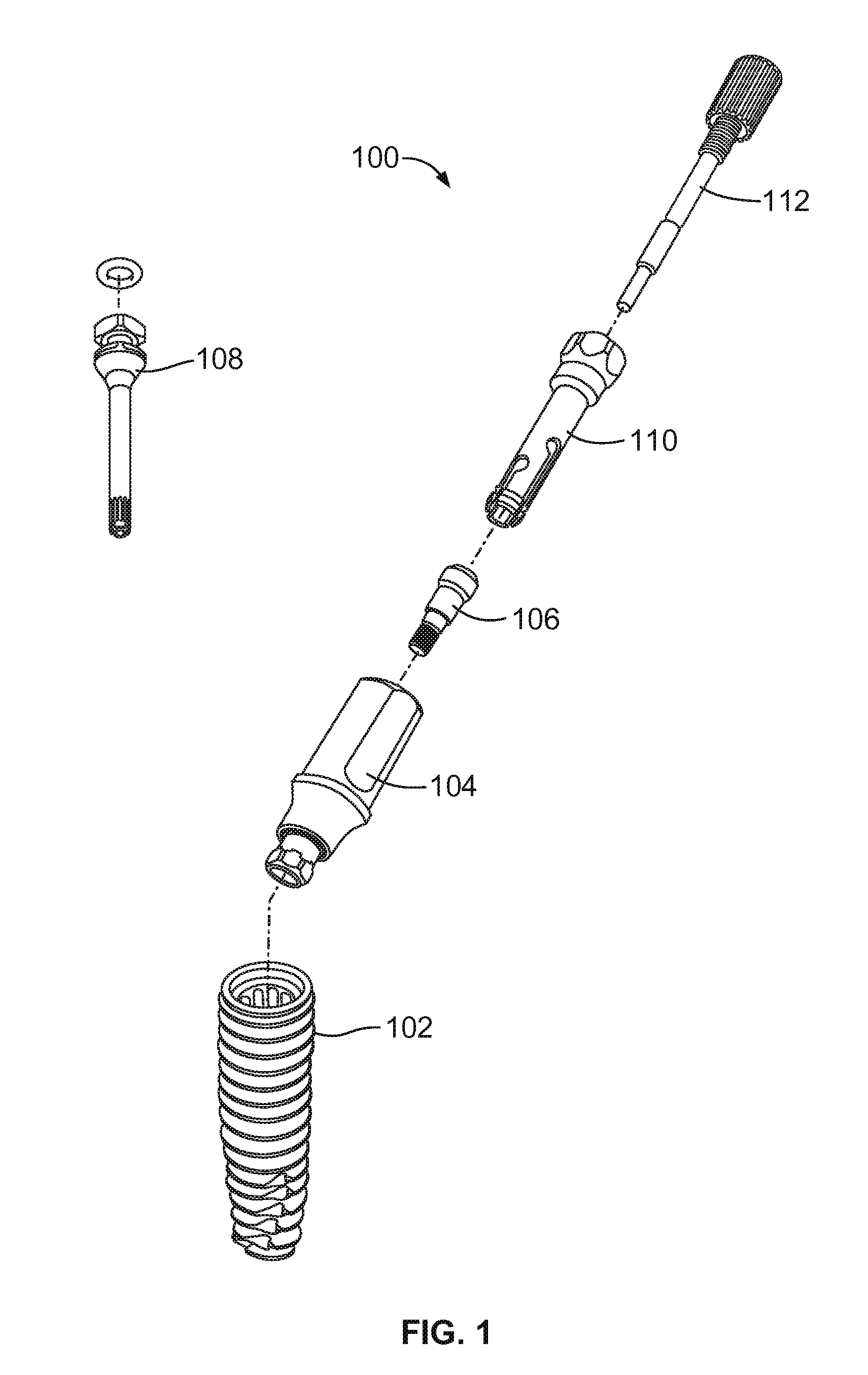System and Method fo Dental Implant and Interface to Abutment For Restoration
a technology of dental implants and abutments, applied in dental implants, dental surgery, medical science, etc., can solve the problems of bacteria penetration and subsequent crestal bone loss, interface virtually no stability, and complicated late scenario
- Summary
- Abstract
- Description
- Claims
- Application Information
AI Technical Summary
Benefits of technology
Problems solved by technology
Method used
Image
Examples
Embodiment Construction
[0054]FIG. 1 is an exploded perspective view of the implant and abutment installation system 100 including an implant 102, an abutment 104, an abutment screw 106, and an implant driver tool 108. FIG. 1 also shows a removal system for the abutment 104 including an abutment removal insert tool 110, and an abutment removal tool screw 112. The components shown in FIG. 1 are used in dental restorative processes. As is known, the implant 102 is implanted into the bone of a patient's jaw. The implant driver tool 108 is used to fix the implant 102 into the bone. The abutment 104 may be a standard part or customized to replace the patient's tooth and is attached to the implant 102. The abutment 104 is fixed to the implant 102 via the abutment screw 106, which may be installed via a screw driver tool. In cases where the abutment 104 must be removed from the implant 102 and cannot be readily removed by hand (after the abutment screw 106 is removed), the abutment removal insert tool 110 is used...
PUM
 Login to View More
Login to View More Abstract
Description
Claims
Application Information
 Login to View More
Login to View More - R&D
- Intellectual Property
- Life Sciences
- Materials
- Tech Scout
- Unparalleled Data Quality
- Higher Quality Content
- 60% Fewer Hallucinations
Browse by: Latest US Patents, China's latest patents, Technical Efficacy Thesaurus, Application Domain, Technology Topic, Popular Technical Reports.
© 2025 PatSnap. All rights reserved.Legal|Privacy policy|Modern Slavery Act Transparency Statement|Sitemap|About US| Contact US: help@patsnap.com



